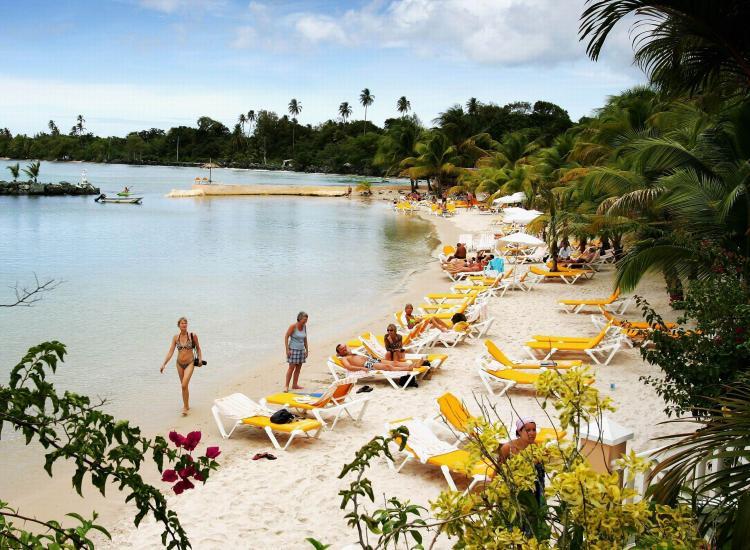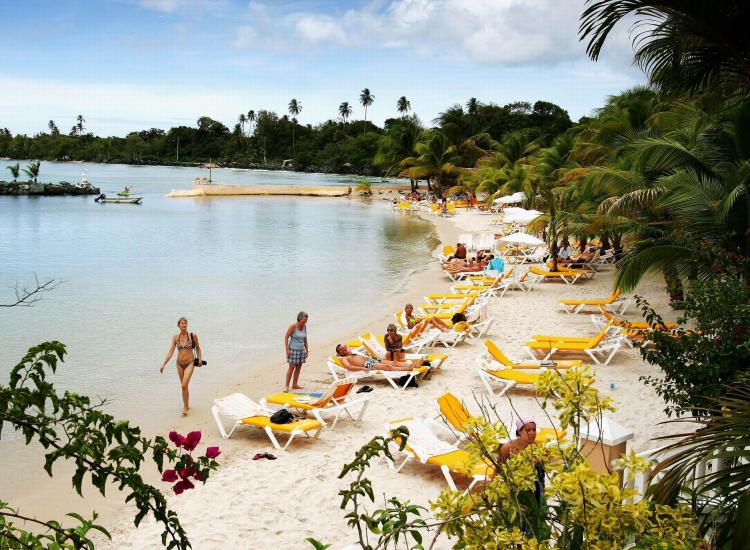Canada’s largest and most comprehensive air transport agreement ever negotiated—the Canada-European Union air accord signed last week—is expected to offer travellers more choices and bring new opportunities for businesses.
However, the big benefit to consumers will take time to manifest, said a Conference Board of Canada (CBOC) researcher.
Although a positive development, the agreement “is a plus but not a boom,” said David Redekop, Principal Research Associate with the CBOC’s Canadian Tourism Research Institute.
“We might have to wait a couple of years before we see the real advantages on the consumer side,” he said.
The air agreement lifts all restrictions on routes, prices, and the frequency of flights between Canada and the 27 EU member states, replacing a patchwork of deals between Canada and individual EU countries.
Canadian and European airlines will be able to operate direct passenger and all-cargo flights to and from any city in each partner’s country. Carriers will also be able to pick up passengers in each partner country and continue to a third country, whereas previously they could only drop off passengers but not pick them up.
The agreement gives airlines more options and eases restrictions, but Mr. Redekop forecasts higher rather than lower airfares this summer because there are now fewer carriers providing service to Europe.
In particular, he pointed to the collapse of three low-fare carriers in the last 14 months that will force an increase in airfares. They include Ottawa-based Zoom Airlines and the British carrier XL Airways in 2008, and last week’s demise of the Scottish discounter Flyglobespan.
Meanwhile, the current economic downturn does not provide an environment for new airlines to start up to provide competition. Mr. Redekop said it is existing legacy carriers like Air Canada, Transat, and British Airways that will benefit from the agreement.
Air Canada applauded the agreement in a news release last Friday, as did the Canadian Airports Council.
However, the big benefit to consumers will take time to manifest, said a Conference Board of Canada (CBOC) researcher.
Although a positive development, the agreement “is a plus but not a boom,” said David Redekop, Principal Research Associate with the CBOC’s Canadian Tourism Research Institute.
“We might have to wait a couple of years before we see the real advantages on the consumer side,” he said.
The air agreement lifts all restrictions on routes, prices, and the frequency of flights between Canada and the 27 EU member states, replacing a patchwork of deals between Canada and individual EU countries.
Canadian and European airlines will be able to operate direct passenger and all-cargo flights to and from any city in each partner’s country. Carriers will also be able to pick up passengers in each partner country and continue to a third country, whereas previously they could only drop off passengers but not pick them up.
The agreement gives airlines more options and eases restrictions, but Mr. Redekop forecasts higher rather than lower airfares this summer because there are now fewer carriers providing service to Europe.
In particular, he pointed to the collapse of three low-fare carriers in the last 14 months that will force an increase in airfares. They include Ottawa-based Zoom Airlines and the British carrier XL Airways in 2008, and last week’s demise of the Scottish discounter Flyglobespan.
Meanwhile, the current economic downturn does not provide an environment for new airlines to start up to provide competition. Mr. Redekop said it is existing legacy carriers like Air Canada, Transat, and British Airways that will benefit from the agreement.
Air Canada applauded the agreement in a news release last Friday, as did the Canadian Airports Council.
According to Statistics Canada’s International Travel 2008 report released on Tuesday, the three most important overseas markets outside the U.S. last year were from Europe, led by the U.K. and followed by France and Germany, and over half of all trips from overseas countries were made by Europeans.
For Canadian travel overseas last year, about one in three trips included at least one stop in Europe, with Bermuda and the Caribbean being the second most popular region for Canadian tourists.
This winter the CBOC sees continued growth in the Caribbean and Mexico markets as “package prices have declined year over year for the last three years and are tracking lower again this year than last winter,” Mr. Redekop said.
One reason for the price decline is the overcapacity of rooms due to decreasing American travel. Mr. Redekop said that Americans, who make up 60 percent of the volume of visits to the Caribbean and even more to Mexico, are not travelling as much as they used to because the economy in the U.S. is in far worse shape than it is in Canada.
With fewer Americans travelling, resorts have dropped prices even further than they did last winter, and Canadian tour operators are passing on the lower prices.
Canadians are expected to make nearly 10 million leisure visits outside the country this winter, said Mr. Redekop, lured by not only the sun and sand but by a Canadian dollar that is now worth about US$0.95 compared with around US$0.81 last winter.
Tripharbour.ca, a cruise vacation website based in Toronto, says that with more ships being built and lower demand due to the recession, cruise fares have dropped to record low levels.
Many Caribbean and European sailings in 2010 are selling for less than $100 per day and some for as low as $50 per day, Tripharbour said in a news release
Meanwhile, despite the recession, most Canadians won’t be cutting their travel budget in 2010, according to an Ipsos Reid poll conducted for Tripharbour.
The poll found that 54 percent of Canadians plan to spend as much for their next vacation as they did for their last one. And 19 percent said they will spend more, 17 percent said they plan to spend less, while 10 percent said their next vacation will be their first.
In terms of dollars, poll results showed that 58 percent of Canadians plan to spend more than $750 per person for their next holiday, and 21 percent plan to spend at least $1,500 per person.
“These findings suggest that travel spending by Canadians will hold up reasonably well over the next year,” says Tripharbour.ca founder Stuart MacDonald. “However, it looks like most Canadians will be looking for good value in order to stretch their travel budgets as far as possible.”







Friends Read Free